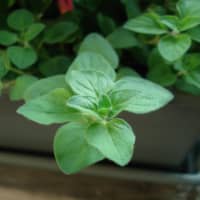Oregano
Healing Properties
- [Anesthetic]
- [Anticancer] (Anticancer)
- cytotoxic to certain types of liver cancer.
- [Antimicrobial]
- [Antibacterial] (Bactericidal)
- [Antiviral] (anti-viral)
- [Immune System]
- **[Immunostimulant
Disease / Symptom Treatment
- [Bacterial Infections]
- Escherichia coli (E. Coli)
- Oregano essential oil (OEO) showed effect on reducing the E. Coli bacterial count in food preservation.[1]
- Escherichia coli (E. Coli)
Title: Combined effects of oregano essential oil and salt on the growth of Escherichia coli in salad dressing
Author(s): Marília Gonçalves Cattelan, Yara Paula de Oliveira Nishiyama, Tânia Maria Vinturim Gonçalves, Alexandre Rodrigo Coelho
Institution(s): Laboratory of Food Microbiology Department of Engineering and Food Technology, São Paulo State University, IBILCE/UNESP, Rua Cristóvão Colombo, 2265, Jardim Nazareth, 15054-000, São José do Rio Preto, SP, Brazil, Laboratory of Fruits and Vegetables Department of Engineering and Food Technology, São Paulo State University, IBILCE/UNESP, Rua Cristóvão Colombo, 2265, Jardim Nazareth, 15054-000, São José do Rio Preto, SP, Brazil, Department of Food Technology Department of Food Technology, Federal Technological University of Paraná, Campus Londrina, Avenida dos Pioneiros, Jardim Morumbi, 86036370, Londrina, PR, Brazil
Publication: Food Microbiology
Date: 7 February 2018
Abstract: There is a broad research interest in the search for alternatives to chemical additives for use as natural food preservatives. Although many natural compounds have biological in vitro properties evidenced, in situ studies are still scarce. This study evaluated the effect of oregano essential oil (OEO) and salt (NaCl) concentrations against Escherichia coli (ATCC 8739), in salad dressing, using the response surface methodology. The experiment included a 22 central composite rotatable design (CCRD) in a total of 11 formulations of salad dressings. Oregano essential oil was characterized by gas chromatography and salad dressings by ash, lipids, proteins and moisture. OEO was composed mainly by carvacrol (65.1%) and p-cymene (12.0%). Salad dressings showed similar chemical profiles. A mathematical model for the prediction of the antibacterial activity in salad dressing was obtained. The results revealed that the interaction between OEO and salt showed effect on the bacterial count. However, the effect of salt was negative suggesting that the highest NaCl concentrations decreases the bacterial count. Therefore, within the parameters studied, the use of OEO to control E. coli in salad dressing can be considered promising and allows reduction in the levels of salt to be incorporated in food.
Link: https://doi.org/10.1016/j.fm.2018.01.026
Citations: ↩︎
